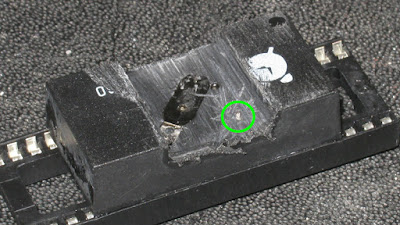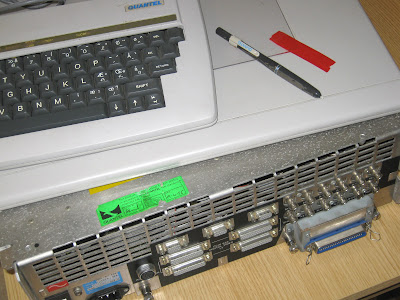During my adventures with the Quantel Paintbox i have unearthed several pieces of documentation that i have scanned in and provided on my Google Drive for all to access.
Many Quantel products used the 3U V-Series chassis so these documents maybe of relevance even to non Paintbox systems. For example the Editbox used the same architecture as the V-Series but was in the larger rack.
Many Quantel products used the 3U V-Series chassis so these documents maybe of relevance even to non Paintbox systems. For example the Editbox used the same architecture as the V-Series but was in the larger rack.
As i add more i will include the details into this post
To access the repository use this link:
The current list of documents is as follows:
Quantel BridgeProcessor2 2058-66 Schematic.pdf
Schematics for the Bridge Processor used in the V-Series chassis.
Quantel CPU3 2060-74 Schematic.pdf
Schematic for the 68010 CPU3 (2060-74) card used in the early V-Series chassis.
Quantel CPU42 2078-82 Schematic.pdf
Schematic for the 68040 CPU42 (2078-82) card used in the later V-Series chassis, similar 2099 & 2101 boards were also used in the Editbox, Domino systems that used the same architecture.
Quantel DiskStore1M 2060-72 Schematic.pdf
Schematic for the DiskStore1M (2060-72) card used in many of the V-Series chassis.
Quantel VideoOut4 2057-69 Schematic.pdf
Schematic for the VideoOut4 (2057-69) used in some of the V-Series chassis, this has YUV/RGB analog and SDI digital output.
Quantel Netcom & Snetcom Documentation.pdf
Some possibly internal user guide for the Netcom and Snetcom board used in the V-Series chassis.
Quantel Network Engineering Training Manual 2066-58-050B.pdf
Network Engineering Training Manual 2066-58 for the V-Series including details of picturenet etc.
Quantel Paintbox Express Installation Manual 2090-58-030B.pdf
Complete installation manual for the Paintbox Express, this is a later 68040 based V-Series machine.
Quantel Paintbox Maintenance Training Manual 2056-58-050C.pdf
Some maintenance & engineering information for the V-Series Paintbox.
Quantel Picturebox Maintenance Training Manual 2057-58-050C.pdf
Similar to the manual above but for the V-Series Picturebox.
















